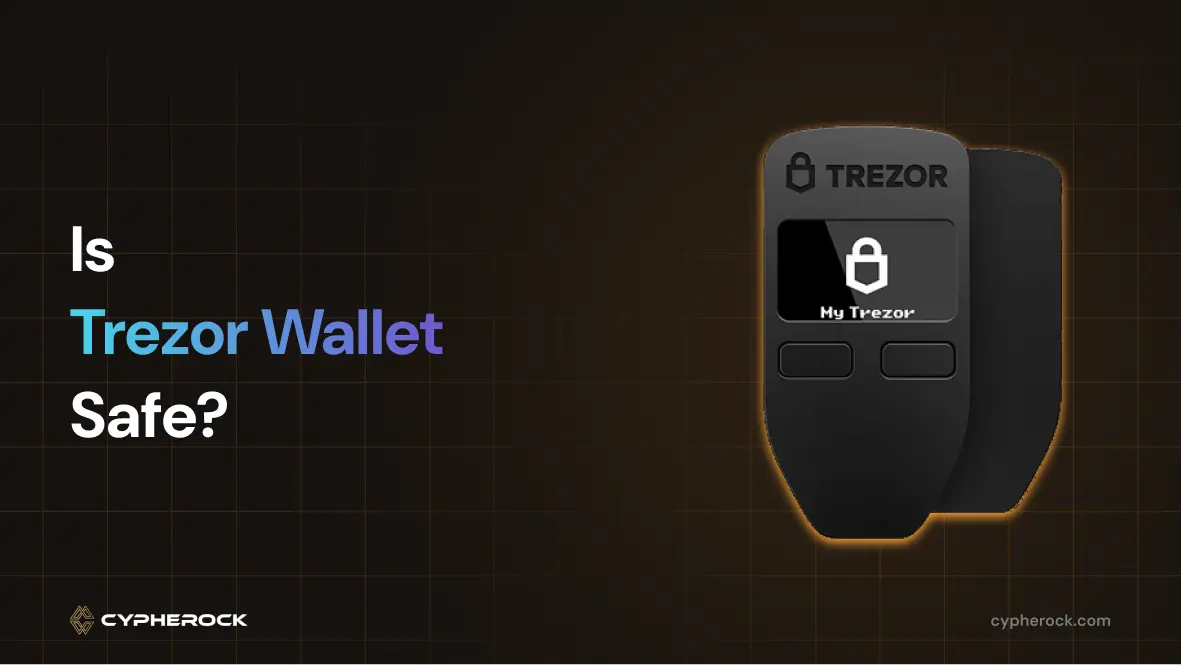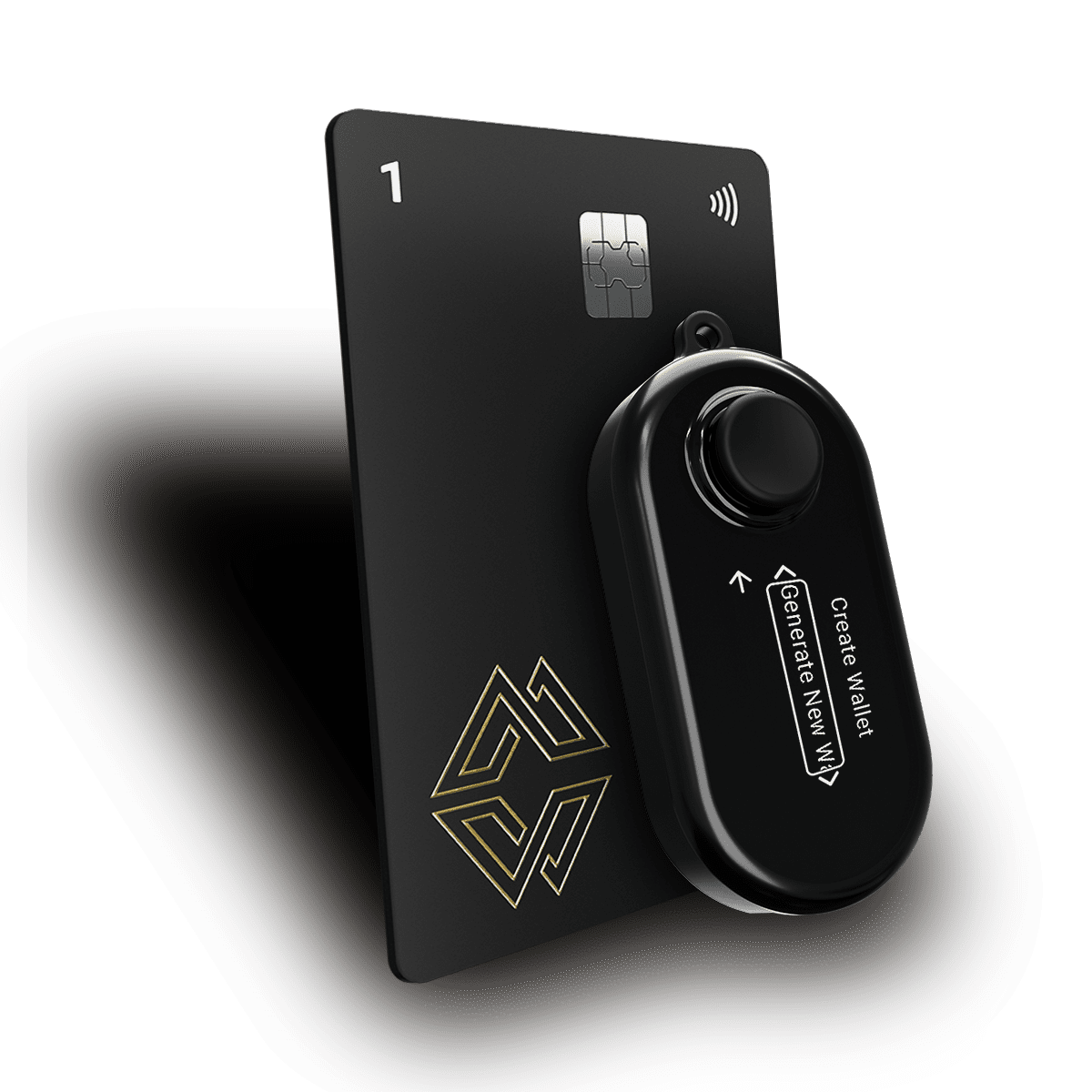

In 2025, more people than ever are buying and holding cryptocurrencies. But with so many headlines about hacks, scams, and lost coins, it’s natural to worry about the safety of your digital money. If you care about keeping your crypto secure, a hardware wallet is one of the smartest choices you can make.
A hardware wallet is a special device that stores your private keys safely offline. This means your coins are protected, even if your phone or computer gets hacked. Among all the brands out there, Trezor is a name you’ve probably heard. It’s known for being open source, easy to use, and packed with special security features, like the famous Shamir Backup for extra recovery safety.
But is Trezor really the safest option for 2025? This review will help you understand where Trezor shines, what risks you should know about, and why some users are choosing new options like Cypherock X1, a wallet built for even stronger backup, security, and peace of mind.
SatoshiLabs, a Czech-based company, launched Trezor in 2014. Since then, it has become one of the most trusted hardware wallets in the crypto world. Trezor also created the first hardware wallet ever made. That means it set the standard for how hardware wallets work today.
Trezor offers several wallet models:
No matter which model you pick, all Trezor wallets store your private keys offline. They use open-source firmware, so anyone (even experts) can check the code for hidden problems or backdoors. Trezor also supports thousands of coins, from Bitcoin and Ethereum to smaller tokens. This makes it a good pick if you own different types of crypto.
Getting started with Trezor is simple, but you must follow some important steps. First, when you open the box, you’ll connect your Trezor device to your computer using a USB cable. Then you’ll create a PIN, which acts like a password. Every time you want to use your wallet, you’ll need this PIN.
Next, Trezor will give you a recovery phrase, 24 random words shown on the screen. Write these words down and keep them somewhere safe and private. This phrase is the only way to get your coins back if your device is lost, broken, or stolen.
Trezor offers something called Shamir Backup on newer models (like Safe 5). Instead of just one recovery phrase, you can create up to 16 “shares.” You only need a few of these shares (like 3 out of 5) to recover your wallet. This makes backup much safer, because even if one share gets lost or stolen, your crypto is still secure.
To manage your coins, you’ll use Trezor Suite, an app for your computer or browser. You can send, receive, buy, and swap coins right from Trezor Suite. If you want to manage NFTs or stake coins, you’ll need third-party apps (like MetaMask for NFTs, or Everstake for staking). Trezor does not handle these things natively.
Trezor is all about transparency and security. Its code is completely open source, which means experts and the public can check for bugs or sneaky code. This is a big reason why security-minded users like Trezor more than some closed-source competitors.
Shamir Backup is one of Trezor’s most powerful safety tools. Most wallets give you a single backup phrase, but Shamir lets you split your recovery into multiple shares. This makes it much harder for a thief or hacker to steal your entire backup, and easier for you to protect yourself against loss or damage.
Trezor uses Hierarchical Deterministic (HD) wallet structure. Each time you send crypto, your wallet creates a new address. This keeps your privacy strong and makes it harder for others to track your payments.
The newest Trezor wallets have a touchscreen (Safe 5 and Model T), so you can enter your PIN and passphrase directly on the device. This means you never need to type sensitive info into your computer, which can be infected by malware.
You can also set an extra passphrase (like a “25th word”) for even more security. Trezor supports two-factor authentication (U2F, FIDO2, etc.), so you can use your wallet to keep your online accounts safe, too.
Trezor has a long track record for keeping users’ coins safe. Here are the top things people love:
These features make Trezor popular with people who want to see and trust every step in the process.
Trezor is a great wallet, but it’s not perfect. Here are some of the main limitations:
You might be wondering if there’s a way to protect your coins that’s even safer than traditional wallets like Trezor. That’s exactly where Cypherock X1 comes in.
Instead of relying on just one device or one backup, Cypherock splits your private key across multiple pieces. So, losing a single part doesn’t mean losing everything.
You also get true flexibility, with both mobile and desktop support, and extra protection built in for your backups. It directly tackles the worries that keep many Trezor users up at night. Let’s explore the key features of Cypherock X1.
Cypherock X1 is built for people who want maximum protection, no matter what happens. Here’s how it works:
Unlike Shamir Backup, which still creates a single recovery phrase split into shares, Cypherock’s split-key approach removes any single point where someone could compromise your entire backup. Even if someone finds a shard, it’s useless without another piece.
Want more details? Check out how Cypherock works.
Trezor is a smart pick if you want a wallet that’s trusted, open source, and easy to use. It’s perfect for people who want:
But if you worry about losing your backup, want a wallet built for inheritance, or like the idea of never having a single vulnerable backup, Cypherock X1 is worth your attention. It serves people who want to avoid losing everything due to fire, theft, or accidents, and those who want a simple way to manage multiple wallets, plan for inheritance, and keep everything secure in one place.
No matter which you pick, both Trezor and Cypherock X1 are much safer than leaving your coins on an exchange or a phone app.
If you have your recovery phrase or enough Shamir shares, you can restore your coins on a new device. If you lose both your device and all backups, you lose access to your funds completely.
Shamir Backup splits your recovery phrase into multiple shares. You only need a set number to recover your wallet. This makes backups more flexible and secure than just a single seed phrase.
No one has ever hacked Trezor devices remotely. However, past research showed that attackers with physical access and advanced technical skills could compromise older Trezor devices using voltage attacks. Always keep your device safe.
No. Your private keys never leave the device. Everything is handled offline.
Cypherock X1 strengthens your backup protection because it never stores your key in a single place. You can lose up to three shards and still recover your coins. Its open-source design and all-in-one management give extra peace of mind.
With Trezor, you must share your backup or Shamir shares with trusted people. Cypherock X1 lets you plan inheritance more safely, giving each heir a shard, with recovery possible if any two shards are combined.
Trezor wallets are a solid choice for anyone who wants simple, transparent, and secure crypto storage. Their open-source code, wide coin support, and Shamir Backup feature make them stand out, if you’re careful with your backups.
But for users who want even more backup safety, easier inheritance, and all-in-one wallet management, Cypherock X1 sets a new standard. Its multi-shard key storage and advanced features take crypto protection to the next level.

Start securing your crypto journey today—visit Cypherock X1 to learn more.
Connect with us:
Twitter: @CypherockWallet
Telegram: Join the Community
